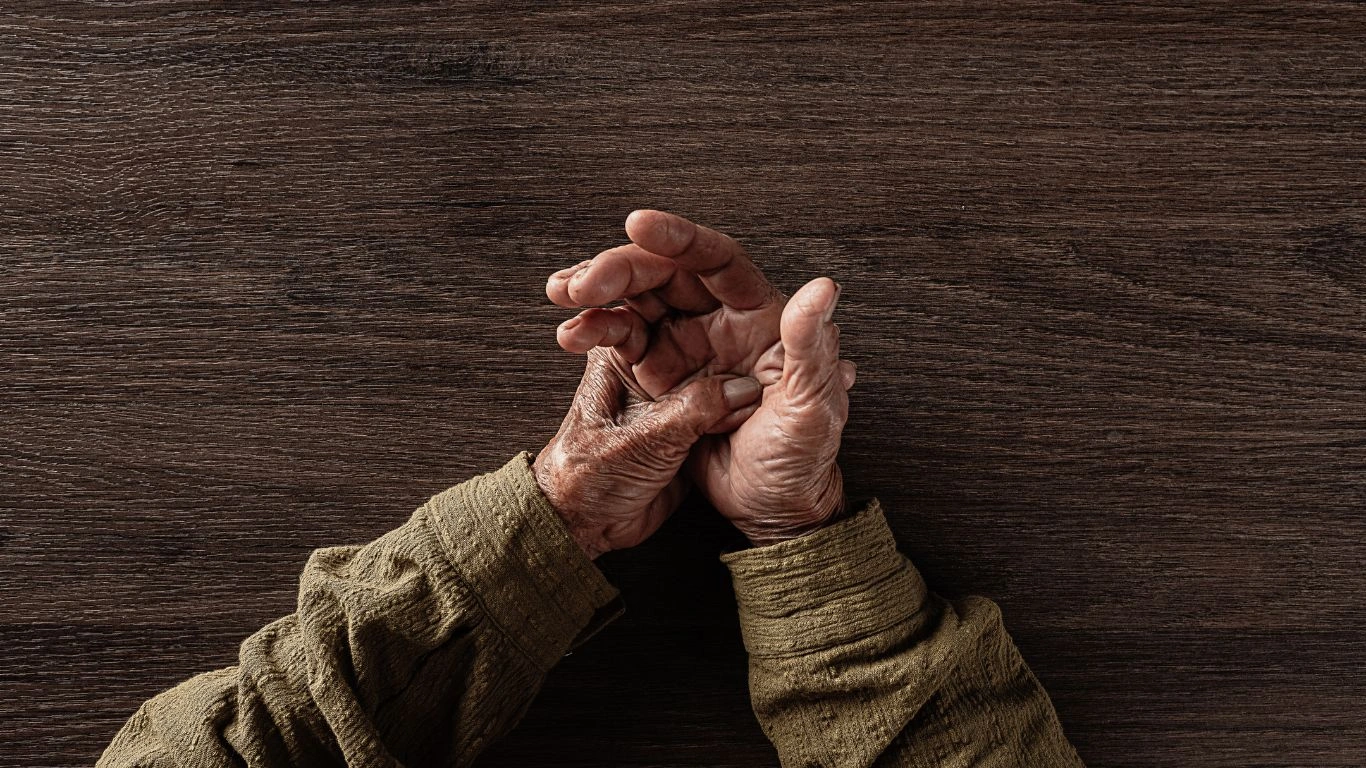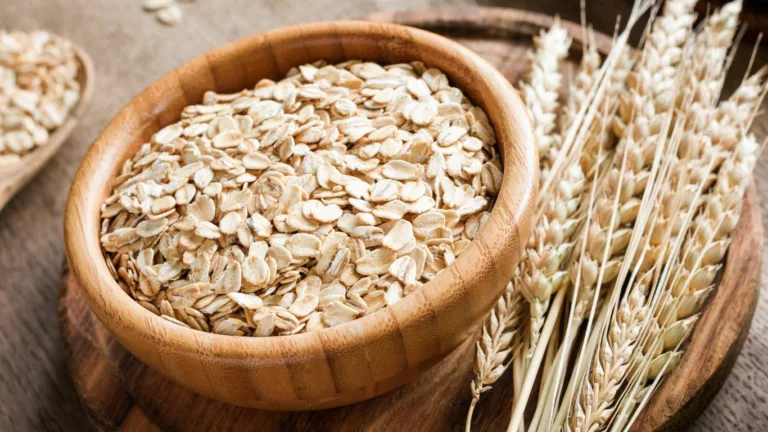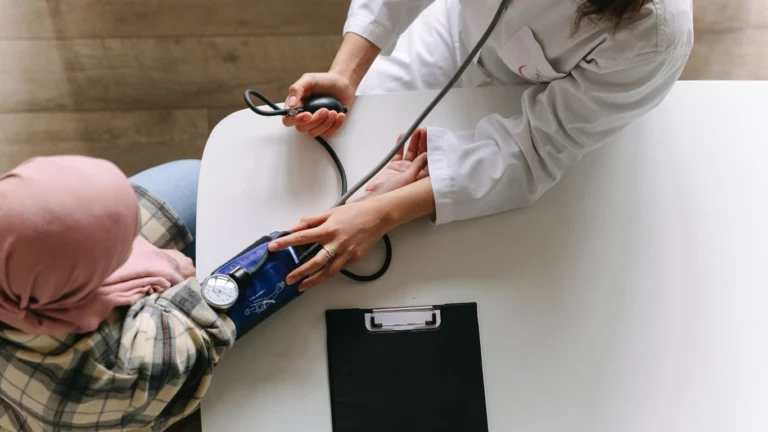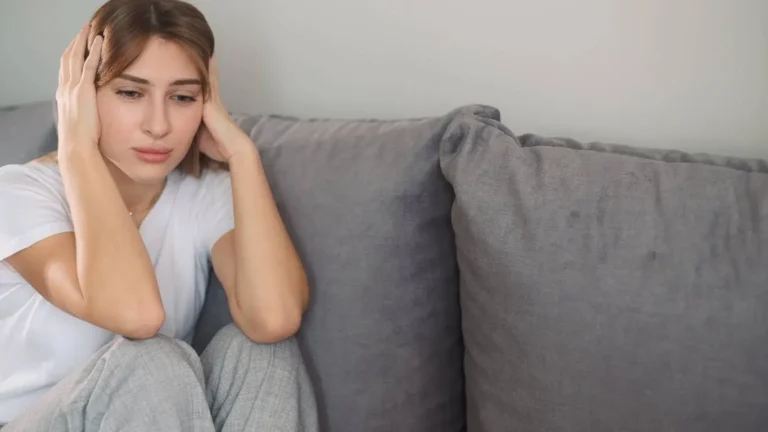Can Rheumatoid Arthritis Cause Swollen Lymph Nodes? Discover the Truth
Can rheumatoid arthritis cause swollen lymph nodes? This is a question I hear more often than you might think—usually from patients who are already overwhelmed by joint pain, fatigue, and the laundry list of RA symptoms they’re trying to manage. It’s a fair question, and honestly, not one that’s talked about nearly enough. As a nurse practitioner specializing in Rheumatology, I’ve sat across from countless patients who’ve nervously pointed out a new lump or tender spot in their neck or underarms, worried it might be something more sinister. Let me tell you, swollen lymph nodes can absolutely be part of the RA picture—but it’s a little more nuanced than a simple yes or no.
Understanding Rheumatoid Arthritis Beyond the Joints

We often think of rheumatoid arthritis (RA) as just a “joint disease,” but that’s a huge oversimplification. RA is an autoimmune condition, which means the immune system mistakenly attacks your own body—primarily the joints, yes, but not exclusively. Inflammation is the name of the game here, and it doesn’t stay neatly contained.
RA can cause systemic inflammation—that is, inflammation that affects the whole body. This includes the lymphatic system, which is a critical part of your immune response. When it kicks into high gear (or gets confused, as in autoimmune diseases), lymph nodes can swell up as they react to all the immune “noise” happening in your body.
What Are Lymph Nodes, and Why Do They Swell?
Lymph nodes are small, bean-shaped structures scattered throughout the body—kind of like immune system checkpoints. They filter lymph fluid and trap bacteria, viruses, or anything else that looks like a threat. When they detect something off, they send up the signal to activate immune cells.
Now, in a healthy immune response—like if you catch a cold—those nodes might swell temporarily while your body fights off the invader. But with RA, the immune system is already in overdrive, even without an actual infection. That chronic inflammation can trigger reactive lymphadenopathy—a fancy way of saying your lymph nodes are inflamed because your immune system is confused.
Can Rheumatoid Arthritis Cause Swollen Lymph Nodes? Let’s Break It Down

In short: yes, RA can cause swollen lymph nodes. But here’s where clinical experience becomes really important. As someone who’s worked closely with patients navigating both new diagnoses and long-term disease management, I’ve seen this pop up in a few different ways:
- Newly diagnosed patients: In the early stages of RA, it’s not uncommon to see lymph node swelling, especially when the immune system is suddenly very active.
- During flare-ups: I’ve had patients come in with tender lymph nodes during RA flares, usually in the neck or axilla (underarm area).
- Medication reactions: Some DMARDs and biologics (like methotrexate or TNF inhibitors) can affect lymphatic tissues too—sometimes triggering temporary swelling.
- Infections: RA patients are more prone to infections, especially if they’re on immunosuppressants. So swollen nodes might be a red flag for something else brewing.
Patient Example: What It Looks Like in Real Life
I remember one patient in particular—let’s call her Maria—who came in after feeling a lump under her jaw. She was newly diagnosed with RA and understandably panicked. She assumed the worst (as we all do when we find something unfamiliar in our body), but it turned out to be a reactive lymph node linked to her recent flare. Once we managed her inflammation and adjusted her meds, the swelling subsided within a couple of weeks.
This kind of story is more common than you’d expect. The key takeaway? Don’t ignore swollen nodes—but also don’t jump to conclusions. Let your rheumatology provider evaluate the context.
Other Autoimmune Conditions and Swollen Lymph Nodes

It’s worth noting that swollen lymph nodes aren’t exclusive to RA. Many autoimmune diseases—like lupus, Sjögren’s syndrome, or even mixed connective tissue disorders—can cause similar symptoms. That’s why we have to look at the bigger clinical picture. I often say diagnosing autoimmune issues is like piecing together a jigsaw puzzle, and lymph nodes are just one piece.
So when a patient tells me, “I found a lump,” I don’t brush it off, but I also reassure them that it’s not automatically a sign of cancer or infection. We go through their history, check for other symptoms (fever, night sweats, weight loss), and order labs or imaging if needed. It’s all about thorough, individualized care.
When to Be Concerned About Swollen Lymph Nodes
Here’s the part I always stress in clinic: just because lymph node swelling can be part of RA doesn’t mean it should be ignored. Sometimes, it can indicate something more serious. Here’s when to call your provider:
- Swelling lasts longer than 2-3 weeks without improvement
- Nodes are hard, fixed in place, or painless (unlike typical RA-related ones)
- You’re experiencing B symptoms: night sweats, unexplained fever, or weight loss
- There’s a new or worsening pattern that doesn’t match your typical RA flare
In these situations, we may need to rule out lymphoma or infections, especially in patients on long-term immunosuppressants. But remember: most of the time, swollen nodes in RA are just another part of the inflammatory process—not something to panic about.
How Inflammation Drives the Connection Between RA and Swollen Lymph Nodes
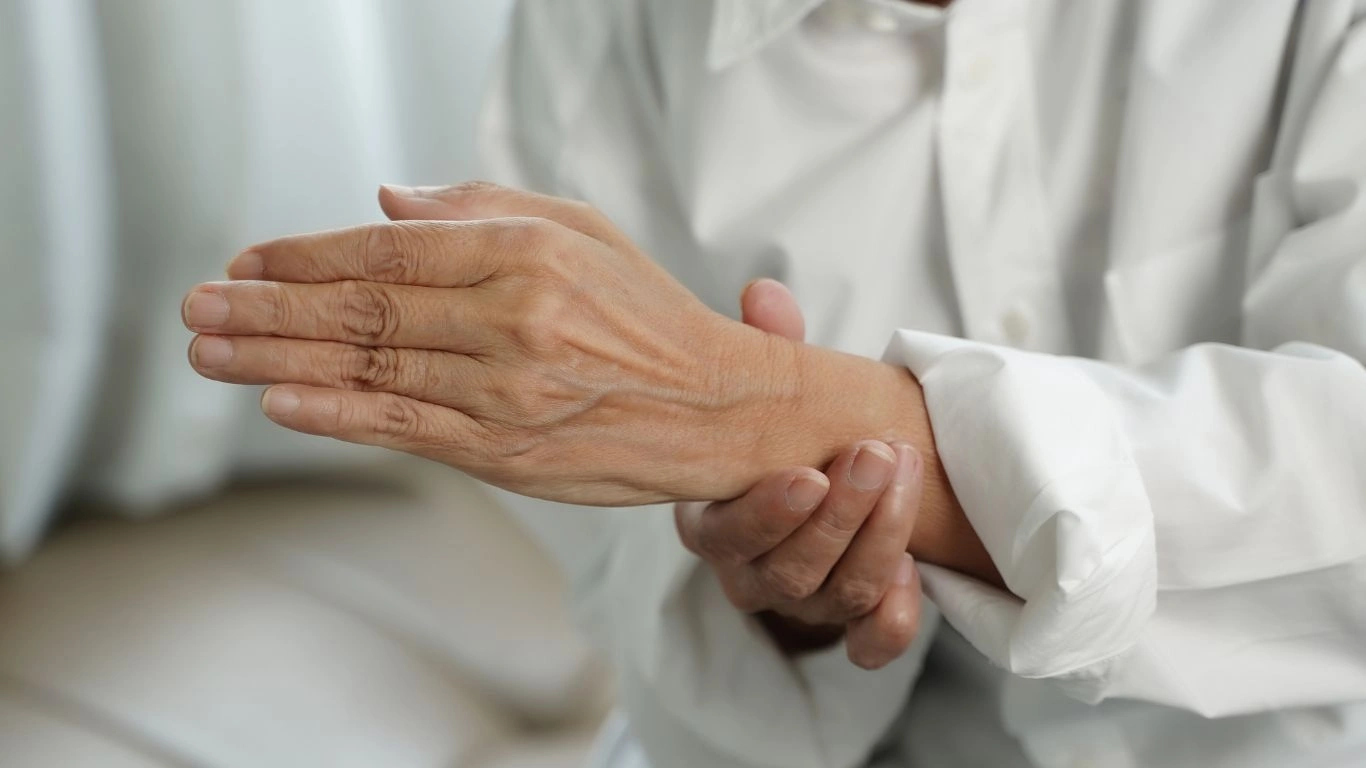
Let’s talk inflammation—because this is where everything ties together. In RA, the immune system is constantly on edge, treating your own joint tissues like foreign invaders. This leads to the chronic inflammation that drives so many symptoms: joint pain, fatigue, stiffness, and, yes, sometimes swollen lymph nodes.
What I’ve noticed in my clinical practice is that patients with high inflammatory markers—like elevated ESR or CRP—are more likely to report swollen nodes, especially during flares. Think of it like this: your immune system is on constant patrol, and it’s reporting back to headquarters (aka, the lymph nodes). The more active the battle, the more likely those command centers will swell up.
Where Do These Swollen Lymph Nodes Usually Show Up?
In my day-to-day work, I most commonly see lymph node swelling in these areas:
- Cervical region (neck)
- Axillary region (armpits)
- Inguinal region (groin)
That said, it can vary from person to person. I had a patient—a younger male in his 30s—who came in with what felt like a small marble in his groin area. At first, we weren’t sure if it was RA-related or something else, but after ruling out infection and confirming he was having a full-blown flare, the swelling made sense. And once the flare was under control, the node went back to normal.
RA Medications and Their Role in Lymph Node Changes

Here’s a layer that can really complicate the picture: the medications we use to treat RA. Many of the drugs used in rheumatology—especially DMARDs and biologics—alter immune function, which can in turn affect lymph nodes.
Let’s walk through a few:
- Methotrexate: It’s been a cornerstone of RA treatment for decades, but it can sometimes cause lymph node swelling as a side effect, especially early in treatment. Usually, it’s mild and temporary.
- Biologics (like Enbrel, Humira, or Rituxan): These target specific immune pathways, which may disrupt normal lymphatic processes. Rarely, they can trigger more serious reactions, including nodal swelling or even lymphoproliferative disorders (though this is rare and usually linked to long-term use).
- JAK inhibitors (like Xeljanz): These newer agents are powerful but come with some risks too, including increased infection risk—which, again, may lead to swollen nodes.
What I always tell my patients is this: if you start a new med and notice any lumps, bumps, or changes—bring it up. We’ll never make you feel like you’re overreacting. Monitoring these changes early can help us adjust your treatment plan before anything gets out of hand.
Distinguishing Between RA-Related Swelling and Something Else
This is where clinical experience really matters. In school, we’re taught the textbook signs of swollen lymph nodes—but in real life? It’s way messier. Patients describe all sorts of sensations: pressure, discomfort, or sometimes nothing at all. Some nodes are soft and mobile (which usually points to inflammation), while others are firm or stuck (which we take more seriously).
Here’s a quick rule of thumb I share with patients:
- If it’s tender and came on during a flare—it’s probably inflammation.
- If it’s painless, hard, or you have other symptoms like night sweats or weight loss—come in ASAP.
- If you’re on immunosuppressants and notice swelling plus a fever—we might need to rule out infection.
And yes, sometimes we order imaging—usually an ultrasound—or labs like a CBC to rule out infections or hematologic issues. I’ve had a couple of cases where further workup was warranted, but most turned out to be benign.
Patient Voices: What They Say and What We Hear

One thing I love about working in Rheumatology is how involved patients are in their care. They notice everything, and that helps us help them. Here are a few things I’ve heard patients say, which often clue me into lymph node issues even before an exam:
- “I felt a pea-sized lump under my arm that wasn’t there before.”
- “My neck feels sore on one side, like I’ve been clenching, but there’s no muscle pain.”
- “I keep getting sick—do you think my meds are messing with my immune system?”
All of these are valid concerns, and honestly, they’re often the tip of the iceberg. What I’ve learned is that patients with RA are some of the most in-tune individuals when it comes to their bodies. They’ve had to be. So if you notice something, don’t second-guess yourself. It’s always worth checking in with your provider.
Can Rheumatoid Arthritis Cause Swollen Lymph Nodes in Children or Teens?
Good question—and the answer is yes, it can. Juvenile idiopathic arthritis (JIA), the childhood version of RA, can also be associated with swollen lymph nodes, especially during active disease. I’ve worked with a few pediatric rheumatologists and seen firsthand how tricky it can be in younger patients. Kids might not describe “swelling” the same way—parents often notice it during bath time or while brushing hair.
Again, the presence of lymph node swelling in a child with arthritis should be evaluated, but it’s not always a red flag. It’s the context that matters most.
How I Approach Lymph Node Swelling in My RA Patients

In my clinic, here’s my typical approach when someone mentions swollen lymph nodes:
- Take a thorough history—when did it start, is it painful, any recent infections?
- Perform a focused physical exam to check size, mobility, tenderness, and distribution of nodes.
- Look for other signs of systemic illness—fever, fatigue, weight changes, etc.
- Review their current meds and labs—has their CRP or ESR spiked recently?
- Decide whether imaging or labs are needed. If things seem suspicious, we don’t hesitate to refer to hematology or ENT.
Every patient is different. What matters most is staying curious, listening carefully, and making decisions with the patient—not just for them.
How to Manage Swollen Lymph Nodes with Rheumatoid Arthritis

Managing swollen lymph nodes in RA patients often comes down to managing the underlying inflammation. If you’re dealing with swollen nodes during a flare, it’s typically a sign that your immune system is in overdrive. This is why one of the most important steps is controlling your RA symptoms as best as you can.
In my experience, there are a few things that can help reduce the occurrence of swollen lymph nodes:
- Adhering to your RA treatment plan: Whether you’re on methotrexate, biologics, or JAK inhibitors, staying on track with your prescribed medications is crucial. These medications are designed to tame your immune system and reduce inflammation, which, in turn, can help prevent lymph node swelling.
- Monitoring inflammation: Keeping an eye on markers like ESR (erythrocyte sedimentation rate) and CRP (C-reactive protein) can give you an idea of how well you’re managing your disease. Elevated levels of these markers often correspond with flare-ups and lymph node swelling.
- Rest and self-care: When you feel a flare coming on, it’s essential to listen to your body. Taking it easy, reducing stress, and getting enough sleep can make a huge difference in how well your body handles inflammation. I always remind my patients that self-care isn’t selfish—it’s necessary for long-term health.
- Regular check-ins with your rheumatology team: Communication is key. If you’re noticing swollen lymph nodes, even if they don’t seem like a major issue, it’s always a good idea to let your provider know. Sometimes, the swelling can signal that your disease is more active than you realized, or that a medication adjustment might be needed.
What If the Swelling Doesn’t Go Away?
If you’ve been managing your RA well, but you notice persistent or worsening swollen lymph nodes, it’s time to take a closer look. While the cause may still be related to RA, it’s always important to rule out other potential conditions. Persistent lymph node swelling could indicate an infection, lymphoma, or other serious conditions—though these are rare.
For example, I had a patient once who came in with persistent axillary swelling despite controlled RA. After a thorough work-up, it turned out to be a viral infection, not her RA. These cases remind me that we must remain vigilant and never assume that swollen nodes are just part of RA. That’s why my approach always includes a comprehensive assessment, even for seemingly routine symptoms.
When to Seek Immediate Medical Attention

While swollen lymph nodes in RA can be expected during flares, there are certain signs that should prompt immediate medical attention. These include:
- Swelling that does not improve within a few weeks, or worsens over time
- Hard, immobile lymph nodes that are not tender to the touch
- Systemic symptoms like fever, night sweats, unexplained weight loss, or fatigue
- New lumps in areas where lymph nodes don’t typically swell, such as the chest or abdomen
If any of these signs occur, I always recommend seeing your healthcare provider as soon as possible. While most cases of swollen nodes in RA are related to inflammation, these red flags can sometimes signal a more serious issue that requires further evaluation.
References for Further Reading
Disclaimer
While this article provides general information about rheumatoid arthritis and its potential link to swollen lymph nodes, it’s important to consult with your healthcare provider for an accurate diagnosis and personalized treatment plan. Every individual’s experience with RA is unique, and what works for one person may not be applicable to another. Always reach out to your rheumatologist or primary care provider if you have concerns about your health.
If you’re noticing unusual symptoms, don’t hesitate to schedule an appointment. Getting to the bottom of any new or concerning changes in your health is vital for maintaining overall well-being. And remember: you’re not alone in this—your healthcare team is here to support you every step of the way!

Tarra Nugroho is a dedicated Nurse Practitioner with a strong foundation in family and preventive care. She brings both compassion and clinical expertise to her practice, focusing on patient-centered care and health education. As a contributor to Healthusias.com, Tarra translates medical knowledge into clear, empowering articles on topics like women’s health, chronic disease management, and lifestyle medicine. Her mission is simple: help people feel seen, heard, and informed—both in the clinic and through the content she creates. When she’s not caring for patients, Tarra enjoys weekend hikes, plant-based cooking, and curling up with a good health podcast.
